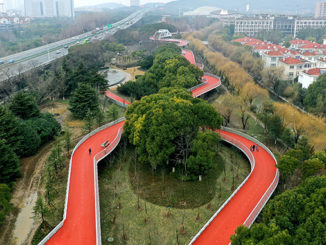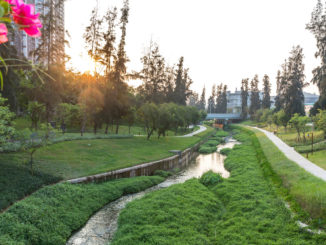Recently, I wrote about the Stages of Landscape Architecture which outlines the common stages we face when managing a landscape architecture design project. However, there are other stages which occur during the process. These can happen regularly or as a once-off stage and can including the following:
Consultation
There are several different types of consultation where stakeholders (government, business, experts, community, people, etc) join the decision making process and are consulted on an idea or their ideas and asked to express their opinions. Consultation can occur at the different stages of projects and involve varying levels of detail from high level urban planning to detailed landscape design. An high level consultation could be an internal government meeting with various department representatives meet to determine the future planning for an area based on a the current vision and policy. A more detailed consultation process may involve an meeting which is open to the public and is in the form of a charrette or design workshop where community members are asked to brainstorm ideas about a place (example – local residents asked to express what they would like to see and use in their local pocket park). Community Consultation is a key part of the design process and sometimes requires experts to create the best outcome for all involved.
Government Approval
For many landscape design projects there is a government approval process, this can be called Masterplan Planning Development, Concept Masterplan Town Planning Approval, Development Approval, or any other names that require a Government to assess and approve a design. These stages can take a few weeks or can stretch out for years depending on the size of the development, the environmental and economic impacts, design complexity and many other factors. Most governments provide a set of guidelines and proforma forms and requirements for landscape architects to complete for an accepted submission and then review and government approval. Some governments require that design must be advertised and published publically to allow for comment and objections.
There may also be an appeals process if the design is unsuccessful due to government or community concerns. This is also were landscape architects can be called as an expert witness to provide a peer review and objective independent opinion (for or against the proposed design).
Variations
Variations are a change in scope of services (decrease or increase) and require the consultant to do more or less work than stated in the contract or agreement. There are often various times when variations may involve a Landscape Architects.
Examples
Scope Variation – a client has decided that the landscape architect should be responsible for all the steps (main entrance, emergency exits, carpark entry, service entry, etc) into the building that were previously the architect’s scope. Therefore, the client notifies a landscape architect that they need to provide a design and documentation of the steps in addition to the scope of services that was originally agreed to in the contract.
Design Variation – the client directs the architect to change the design of the building and enlarges the floor plan at design development phase and rotate the front wall of building. The landscape architect has to rework the concept design to suit the new building orientation. This would be regarded as a variation.
Cost Variation – the landscape architect with client approval decides to change the material for an area from raised timber decking to stone paving. The contractor then issues a cost variation for approval by the client and landscape architect for the reduction in cost of material.
There are several other variations that can occur, however the important element to remember is to have the scope of services and work in writing and to notify your client of a variation as soon as it is apparent and to ensure you receive approval prior to proceeding.
VE/VM – Value Engineering or Value Management
Value Engineering can occur as early as Concept Design or Design Development, but usually occurs during the Tender Stage (Procurement) when the client has received tender documents or a tender costing from either the landscape architect or the Quantity Surveyor. When the Quantity Surveyor provides a costing it often includes a section on cost savings. When landscape architects hear this term we cringe as we know that we will have to review our design and there may be some changes. These changes can be small or large involving design, materials, or planting (tree quantities or sizes).
When preparing a response to Value Engineering request it is best to use the following sub stages – Gather Information, Measure, Generate Alternatives, Evaluate, Develop Ideas, Present Ideas. This is a clear way of showing defined process in evaluating your design and proposing changes that will still perform and create the same or similar design outcomes.
Examples
Deletion – the client decides to remove the water feature to save on costs.
Substitution – the landscape architect recommends to change some paving areas to grass or planting areas.
Change in Specification (another form of Substitution) – the civil engineer analyses the stone specification and suggests that the thickness in some areas could be thinner due to low volume of pedestrian traffic. The materials aesthetic and performance criteria are still met but the cost is lower.
As many will attest that to designers going through a Value Engineering stage can be stressful, however we need to keep in mind that the majority of clients are looking for savings but wish to still meet the main design objectives of the project. Sometimes, materials may change or trees reduced in size to meet the budget, however we can still achieve the design objective by creating a great place for people.
Hold or Delays
When working on projects you may experience a hold or delay period in a project at any time. Although not a formal stage of the project, Holds and Delays can occur for many reasons including delay in government approval, market changes (financial or demand), architecture or engineering design changes or challenges. Hold or Delays can sometimes be a few days or can stretch out to a few years (such as during the late 2000’s financial crisis). Depending on the contract that you have signed there will be clauses regarding holds or delays and these may include what is expected in terms of notices and expected lead times in recommencement of works.
Example
A new Apartment Development goes on hold due to over supply in the market. The client notifies the consultants (architect, landscape architect, etc) that they expect the delay to be 12-18 months and to hold when they have completed the current stage of work. The contract states that the consultants will be notified when they are expected to recommence work and that the consultant is needed to recommence work within 28 days of the being notified. The contract also states that the consultant may re tender the project or seek a variation for remaining stages due to the delay.
Billing (Invoicing) & Payments
Getting paid is key to running a business and is a critical stage of landscape design projects. Some may say that Payments, Billing (Invoicing) is not a stage but part of every stage of a landscape architecture project. However, it can become a stage unto itself when there are delays in payment or not getting paid at all and you’re spending time to get paid. As a project manager or business owner you (or your finance team) can spend a lot of time chasing payments and issuing invoices. However, if you maintain a professional relationship with clients and you have clearly setting out the schedules, expected payments, and timing then you can be confident in your requests for payment and receiving payment in a timely manner.
I hope that this follow up post about the Stages of Landscape Architecture Design Projects has been helpful and is a useful resource during your work life. Feel free to email me on damian@worldlandscapearchitect.com with comments or questions.
Damian Holmes is the founder and Editor of WLA. He is also a registered Landscape Architect of the Australian Institute of Landscape Architects and has over 15 years experience as a landscape architect in Australia, Canada and China.
Disclaimer: The information contained in this blog post is for information only, the reader must undertake their own full investigation prior to making any decisions or taking any action based on the information provided. There are no representations or warranties of any kind with respect to the information contained in this blog post.




